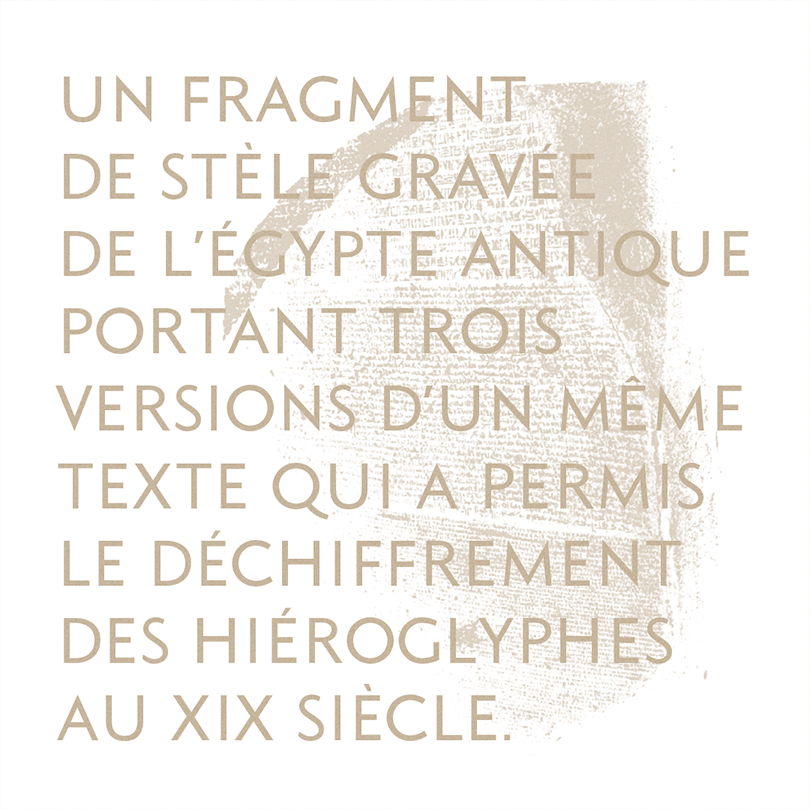ROSETTA TYPEFACE
[work in progess] [typedesign – 2023]
Rosetta Typeface is the first character design project supervised by my type design instructor, Franck Jalleau, during my first year. This exercise involves using a Roman capital as a base, adhering to geometric shapes (square, circle, and triangle). Rosetta Typeface was entirely hand-drawn and then digitized using Glyphs. It includes a complete set of uppercase letters, numbers, standard punctuation, French diacritics, and some ligatures. I am continuously refining this typography, adding ligatures, and considering the introduction of three different weights.

